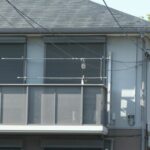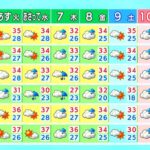A Japanese researcher has been selected for this year’s Nobel Prize in Physiology or Medicine. The award goes to Professor Shimon Sakaguchi, a specially appointed professor at the Immunology Frontier Research Center of Osaka University.
In 1977, Professor Sakaguchi was a research student at the Aichi Cancer Center in Nagoya.
He discovered the existence of “regulatory T cells,” which play a role in suppressing immune system overreactions.
This discovery is expected to have applications in cancer treatment and therapies for allergic diseases such as hay fever.
This marks the first Japanese Nobel Prize in the natural sciences categories in four years, making him the 29th Japanese laureate following Syukuro Manabe, who won the Physics Prize.
Nobel Prize in Physiology or Medicine
The Nobel Prize in Physiology or Medicine is an annual international award administered by the Nobel Foundation and presented by the Karolinska Institute in Sweden. Established by the will of Alfred Nobel in 1895, it was first awarded in 1901 to Emil von Behring for his work on serum therapy against diphtheria. It honors scientists whose groundbreaking discoveries have led to a profound understanding of life or a major advancement in the fight against disease.
Osaka University
Osaka University is one of Japan’s leading national universities, founded in 1931 as the sixth Imperial University. It originated from two older predecessor institutions: Tekijuku, a renowned private school from the Edo period, and the Osaka Prefectural Medical School. Today, it is a comprehensive research university with multiple campuses, consistently ranked among the top institutions in Japan.
Aichi Cancer Center
The Aichi Cancer Center is a leading comprehensive cancer treatment and research institution located in Nagoya, Japan. It was established in 1964 with the mission of integrating advanced patient care with pioneering cancer research. The center is renowned for its multidisciplinary approach to oncology, combining hospital services with dedicated research laboratories.
Nagoya
Nagoya is a major industrial and cultural hub in central Japan, historically known as the seat of the powerful Owari Tokugawa clan during the Edo period. The city is renowned for Nagoya Castle, originally built in 1612 and reconstructed after WWII, which features its iconic golden dolphin-like shachihoko ornaments. Today, Nagoya is a center for automotive manufacturing and technology, home to companies like Toyota.
regulatory T cells
Regulatory T cells (Tregs) are a specialized subset of white blood cells that play a critical role in suppressing immune responses and maintaining self-tolerance. They were first identified in the 1990s and are essential for preventing autoimmune diseases and controlling excessive inflammation. Their discovery revolutionized the understanding of immune system regulation and has opened new avenues for treating autoimmune disorders and improving transplant tolerance.
immune system
The immune system is not a physical place or cultural site, but a biological defense network found within living organisms. It is a complex system of cells, tissues, and organs that has evolved over millions of years to protect the body from pathogens like bacteria, viruses, and other foreign invaders. Its primary function is to identify and neutralize these threats to maintain health.
cancer treatment
Cancer treatment is the medical practice of diagnosing, managing, and attempting to cure cancer. Its history has evolved from early surgical interventions to modern approaches including radiation therapy, chemotherapy, immunotherapy, and targeted therapies, which have significantly improved patient outcomes over the last century. These treatments aim to remove or destroy cancer cells, control their growth, and alleviate symptoms.
hay fever
“Hay fever” is not a place or cultural site, but a common term for allergic rhinitis. It is a seasonal allergic reaction to pollen from trees, grasses, and weeds. The name originated in the 19th century from the mistaken belief that the smell of hay was the cause of the symptoms.






